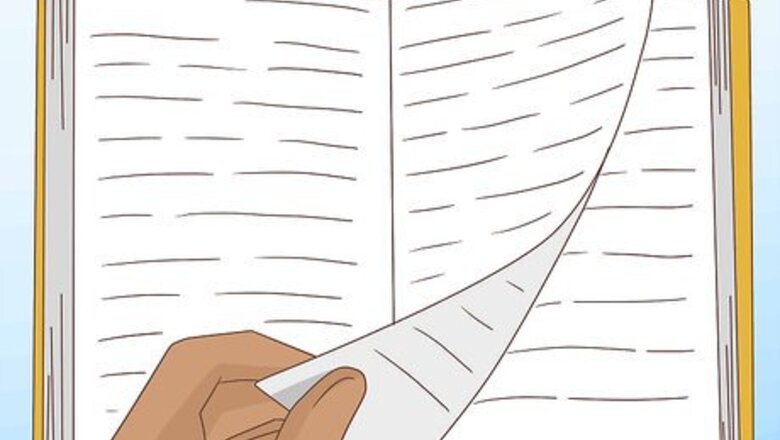
views
[1]
X
Research source
Understanding a Piece of Writing
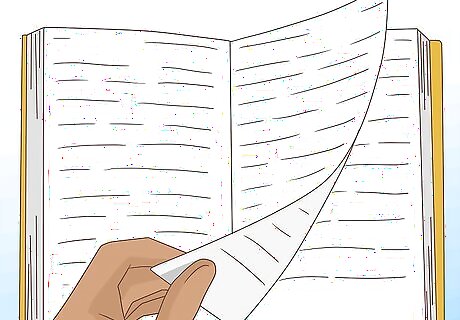
First, skim read. The first time you work through a piece of writing, it can be helpful to simply skim it. Skim reading involves reading very quickly, only briefly pausing to examine details. Skimming can help you get a general idea of what a piece of writing is about before you read it again, saving you time and energy in the long run. There's no "right" way to skim read, but one good policy is this: Read the entire intro paragraph Read the first sentence of each body paragraph Read the entire conclusion paragraph

Re-read with greater focus. Now that you've done a skim reading and you know the rough "point" of the essay, it's time to read it "for real." Proceed through the whole essay again, this time reading each sentence slowly and carefully. Don't hesitate to read sentences or paragraphs again if you're having a hard time understanding the content. Don't rush — slowing down helps you connect with the text.
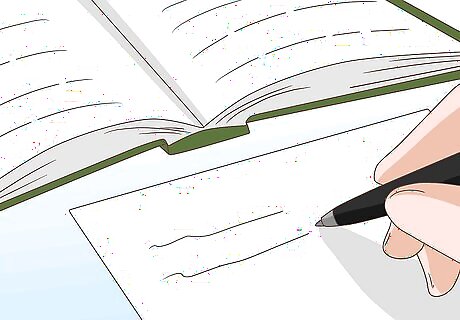
Make notes while you read. Taking notes in a class can help you retain more information — doing so while reading is no different. Writing down key thoughts and phrases will make you actively pay attention to what’s going on in the text. You can also jot down questions you have so that you can try to answer them later. Mark words and concepts that you don't understand for later reference.
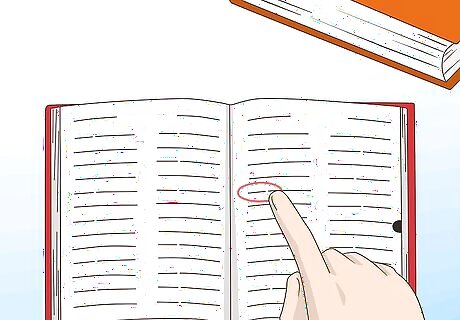
Look up words and ideas that you don’t know. If you understand every word and concept you came across in the essay, you're in luck — you can move on. However, if there was anything in the essay that you didn't understand, now is your chance to enlighten yourself. Filling in the gaps in your knowledge will help you gain a fuller understanding of the text. Dictionaries and thesauruses can help with words you don't know. However, technical terms and unknown concepts may require you look up help articles online. For instance, if you're reading an article about "4K" television, you probably won't be able to find a definition for 4K in the dictionary.

Discuss the writing's "main points" in your own words. Now, do another quick skim reading. After each paragraph, ask yourself, "What was the point of what I just read?" Express your answer in your own words — try not to copy the essay's. Working your way through the essay piece by piece and reinterpreting the information each step of the way is a great way to make the most important themes in the writing "stick."
Understanding the Bigger Picture

Do some background research on the writing. Critical reading acknowledges that every piece of writing is a product of a certain person, time, and place. This personal, historical context affects both the content of the writing and the voice of the author. Research the context of the piece of writing you're analyzing. Answering the "when," "where," and "who" of the writing is a good place to start. After this, familiarize yourself with the mindset, beliefs, opinions, and current events that were happening as the writing was created. Ask, "how are these reflected in the writing itself?"
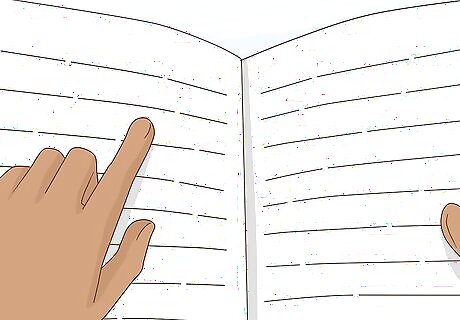
Carefully examine the words the author has chosen to use. A single word can carry many different meanings. Many authors use subtle turns of phrase to convey double meanings or raise questions in the reader's mind. Ask yourself, "does the author of this piece of writing really mean what she/he says? Is there anything ambiguous about the way the work is written?" If you're not sure whether the work has a hidden meaning, consider why it was written in the first place (your background research can help you here). Is the author just trying to entertain you, or is s/he trying to convince you to accept a certain theory or philosophy?

Note how the work makes you feel. Neither the author nor the reader is a completely cold, logical machine. Recognizing a work's emotional content is also important to gaining a full understanding of it. You don't need to write your emotions down, but instead just think about how the tone, diction, and syntax effects your emotions and interpretations of the text. While it's important to acknowledge the text's emotional content, a crucial part of critical reading is to take a logical approach to analysis, rather than an emotional one. Recognize your emotions (as well as the author's), but don't let them keep you from thinking about the work with a detached, objective perspective.

Practice metacognition. This just means to think about what you have thought about. Consider your thoughts about the passage you have read. What do they say about your relationship to the author? What do they say about you? Do you find yourself mostly agreeing with the author or mostly disagreeing? Below are just a few tips to help with metacognition: Challenge or question at least one thing you read in the passage. Then take the author's side and argue for it. Remember: just because you read it doesn't mean it's true! Consider how the reading may apply to your life. This could mean anything from thinking of when you might need to know what acids and bases are to personally applying a line of poetry which especially moved you.

Try to enjoy what you're reading. Critical reading isn't just a joyless, logical exercise. The feeling of accomplishment you get from working towards an understanding of a complex piece of writing can be an excellent motivator. It's also fun to gain ideas and perspectives that you haven't had before. There's no escaping it: some passages are just dry or uninteresting. See if you can find at least one thing you like about what you're reading. You can even pretend you're a detective or a reporter and the passage you are reading is involved in an exciting assignment. This makes things a little more fun. If you can't find anything fun in the reading, it's probably advanced academic material. In this case, enjoy feeling smart for reading it!




















Comments
0 comment